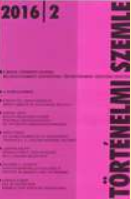Zrínyi Miklós és Szulejmán halála
Miklós Zrínyi and Süleyman’s Death
Author(s): Pál Fodor, Szabolcs VargaSubject(s): History, Political history, Middle Ages, 16th Century, The Ottoman Empire
Published by: Magyar Tudományos Akadémia Bölcsészettudományi Kutatóközpont Történettudományi Intézet
Keywords: Miklós Zrínyi; Sultan Süleyman I; Habsburg Hungary; Croatia; The Ottoman Empire;
Summary/Abstract: The fates of Miklós Zrínyi and Sultan Süleyman I became intertwined on account of the place and time of their death. Despite the fact, however, that Zrínyi was one of the most renowned common heroes of Habsburg Hungary and Croatia, and Süleyman the most outstanding ruler of the Ottoman Empire, the way and time of their respective deaths have given birth to innumerable theories. The present paper reconstructs the last days of the siege of Szigetvár on the basis of contemporary archival and narrative sources. The authors conclude that Zrínyi died a heroic death around noon on 7 September 1566, after he had rushed out from the inner castle at the head of his soldiers on foot and attacked the Ottoman troops. Although the sources are extremely contradictory, it can be stated with considerable probability that Zrínyi died on the castle bridge after being hit by several bullets. On launching his final assault, the captain could not be aware that, after an agony which lasted for several days, the old sultan had died in his tent just a few hours before, presumably in the first hours of 7 September. Exact dating was hindered by the fact that the time of the sultan’s death was at first concealed, and later distorted by Süleyman’s entourage, and consequently it was thought already by contemporaries to have happened days before, thus leading astray later researchers as well. Recent historical and archaeological explorations have revealed that the sultan died in his imperial tent which stood 4.2 km to the north of the castle, on a promontory also known as Szemlőhegy/Semlék. Ten years later a pompous mausoleum (türbe) and a mosque were ordered to be erected on the site by sultan Murad III and Grand Vizier Sokollu Mehmed Pasha.
Journal: Történelmi Szemle
- Issue Year: 2016
- Issue No: 02
- Page Range: 181-201
- Page Count: 21
- Language: Hungarian

